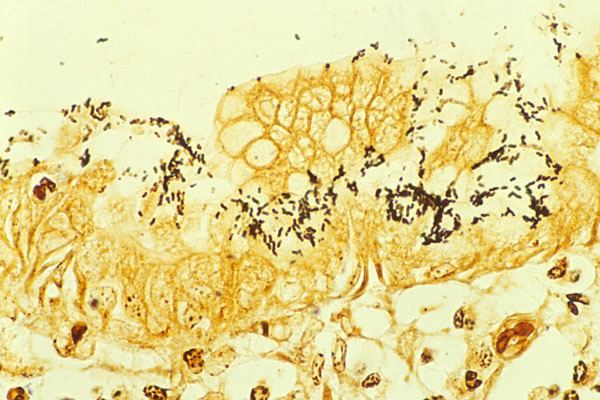 | ||
The Warthin–Starry stain (WS) is a silver nitrate-based staining method (a silver stain) used in histology. It was first introduced in 1920 by American pathologists Aldred Scott Warthin (1866-1931) and Allen Chronister Starry (1890-1973), for the detection of spirochetes. It has been considered the best stain for detection of spirochetes, and is also used to stain Helicobacter pylori, Lawsonia intracellularis, Microsporidia, and particulates. It is also important for confirmation of Bartonella henselae, a causative organism in cat-scratch disease.
Warthin–Starry stains organisms dark brown to black, and the background light golden brown/golden yellow.
References
Warthin–Starry stain Wikipedia(Text) CC BY-SA
